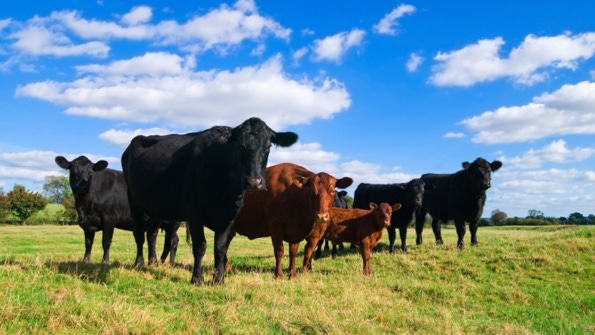
Livestock and dairy producers have more tools in their toolbox to protect themselves from risk with several enhancements made to livestock and dairy insurance programs. USDA’s Risk Management Agency’s Risk Management Agency made changes to their Dairy Revenue Protection (DRP), Livestock Gross Margin (LGM) and Livestock Risk Protection (LRP) programs take effect July 1, 2019.
RMA Administrator Martin Barbre said making these products available to all producers helps offer insurance to producers at a time when many livestock sectors are struggling.
“These changes to livestock and dairy programs strengthen risk management options and provide peace of mind in times of unpredictable market fluctuations,” said Barbre.
The Bipartisan Budget Act of 2018 removed the livestock capacity limitation, which allowed the Livestock Gross Margin (LGM) program to remove the individual capacity limitation under the cattle, dairy and swine program. Prior to the revised legislation, the Federal Crop Insurance Act limited the amount of funds available to support livestock plans of insurance offered by RMA to $20 million per fiscal year.
LGM provides protection against loss of gross margin or the market value of livestock minus feed costs. Barbre explained the cap was a disincentive for many to sign up and created some unwarranted havoc. He explained many agents weren’t pushing those products as much because of the cap as well.
LRP protects livestock producers from the impact of declining market prices. RMA offers LRP insurance plans for fed cattle, feeder cattle and swine.
Beef producers electing the LRP insurance plan for fed cattle may choose from a variety of coverage levels and insurance periods that correspond with the time the market-weight cattle would normally be sold. Likewise, the LRP plan for feeder cattle allows beef producers to choose from a variety of coverage levels and insurance periods that match the time feeder cattle would normally be marketed (ownership may be retained).
LRP insurance for swine gives pork producers the opportunity to choose from a variety of coverage levels and insurance periods that match the time hogs would normally be marketed.
RMA also offered some important changes to the LRP, including coverage for swine, fed and feeder cattle to all states. Barbre explained the government’s share of premiums increased from 13% of all coverage levels to a range from 20% to 35% based on the coverage level selected. Another key change increases the per head and annual head limits: fed cattle and feeder cattle at a 3,000 head per endorsement and 6,000 head annually and swine 20,000 per endorsement and 75,000 annually.
Other modifications include updating the Chicago Mercantile Exchange trading requirements to allow for more insurance endorsement lengths to be offered for producers to purchase and modified the Price Adjustment Factor for Predominately Dairy cattle to 50% for both weight ranges, which allows dairy cattle to reflect market prices more accurately.
USDA launched the Dairy Revenue Protection insurance product in October 2018. Barbre said currently 10% of the nation’s dairy herd now has the dairy insurance coverage. The latest farm bill also removed the restriction on allowing dairy producers to enroll in the dairy margin protection and have the dairy insurance protection.
RMA explained DRP is designed to insure for unexpected declines in the quarterly revenue from milk sales compared with a guaranteed coverage level. The expected revenue is based on futures prices for milk and dairy commodities and the amount of covered milk production elected by the dairy producer. The covered milk production is indexed to the state or region where the dairy producer is located.
Improvements for the 2020 crop year include modifications to the minimum declared butterfat from 3.50 to 3.25 pounds, making the range 3.25-5 pounds, and the minimum declared protein range is expanded from 3.00 to 2.75 to 2.75-4 pounds, affording greater coverage flexibilities for dairy producers. USDA also removed the declared butterfat test to declared protein test ratio to simplify the process for dairy producers; and adjusted the coverage levels - removal of the 70% and 75% coverage levels.
At the end of the day, Barbre continues to guide RMA in creating products that allow for increased risk protection and make operations more viable in the future. “We want to keep [today’s producers] in production and keep them going forward,” he said.
He encouraged producers to visit www.rma.usda.gov to find additional fact sheets about policies and an agent locator to identify a certified agent. LGM offers a once-a-month sign-up, while DRP and LRP are available every day.
About the Author(s)
You May Also Like






